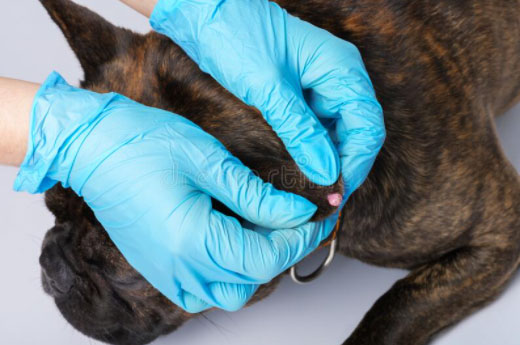Warts in dogs are usually caused by the papillomavirus and are typically harmless. Sometimes, they shrink and vanish on their own due to the dog’s immune response. However, if they persist or interfere with the dog’s activities, medical attention may be required. Warts, especially around the mouth, can disrupt eating and may bleed if bitten. If warts grow, become inflamed, or show severe signs, consult your vet for removal options. Learn how to remove warts in dogs in this article.

Different ways of removing warts on dogs
Reducing medication dosage
If your dog has an autoimmune disease and you are using immunosuppressants, then warts may be caused because of a reaction to these drugs. You may have to quit or reduce the dose of these medications to deal with warts.
Increasing immunity
Warts may caused due to a weak immune system. Ensure you provide high-quality supplements to your dog to boost its immunity.
Antibiotics
Your vet may prescribe antibiotics such as Azithromycin to fight against papillomavirus. This is known to be effective in curbing warts in dogs.
Electrosurgery
In this procedure, a medical professional uses a specialised machine, which when applied on the wart, generates a small amount of electrical energy to burn it from the skin and remove it. Your dog will be given local anaesthesia before the process.
Excision
This procedure requires the use of general anaesthesia to remove the warts. The doctor uses a surgical tool to remove contaminated cell growth from the skin. This procedure may be an age old method, but is considered risky and expensive.
Interferon
This medication can be administered orally or through injections. This is used when other methods prove to be ineffective in removing warts or if it is a severe growth. This method requires taking medication for a few weeks to get rid of the warts. As a reaction to the medicine, the dog may develop fever, but this method is helpful in avoiding surgery.
Laser Ablation
When all else fails, this method is used to deal with warts that refuse to go away. This is considered a highly effective method, because warts are not only removed completely from the roots, but are prevented from reoccurring. However, this is an expensive and risky procedure that requires the administration of general anesthesia to the dog.
Alternative treatments
Homeopathy – Thuja is a homeopathic medicine that is used in the treatment of warts in dogs.
Apple Cider Vinegar – This is known to remove warts, when applied using cotton on the skin growth.
Castor oil – This softens the warts and aides their removal.
Aloe Vera – Applying aloe gel helps in making the warts dry and fall off.
You may also try applying baking soda, banana peel, vitamin E and other home remedies to treat the warts.
To sum it up, dog warts are usually not a big problem and often go away on their own. But if they stick around and bother your dog, it’s best to see the vet. Especially if warts are causing eating problems or look severe, consult the vet for guidance on how to remove warts in dogs.





